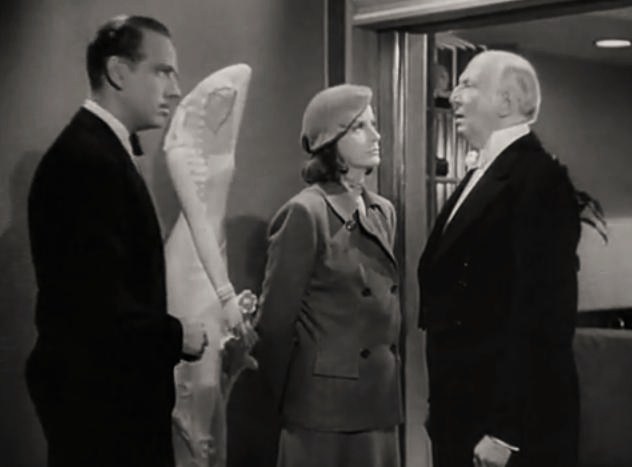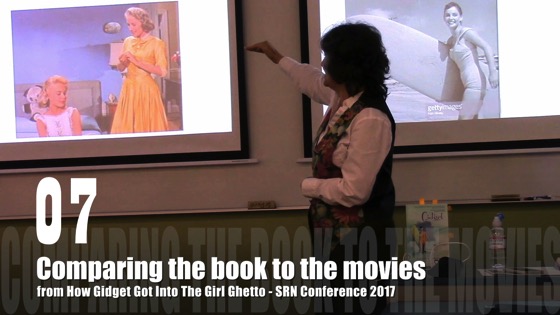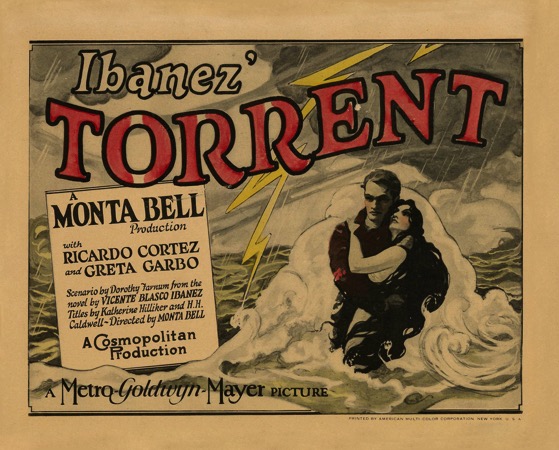Watch this entire presentation
Transcript:
I also noticed when watching all the movies — first of all, the girl playing Gidget changed in every film. So it wasn’t even like we cared that she had to be the same woman. She was just this image and the boy stays the same. James Darrin plays Moondoggie in all three of these films. So it turns out to be a trilogy about the life of a boy who surfs and has an everchanging girlfriend with the same name. This is not at all what I expected to find when I came to this and he sings music. So then we get Ruth Brooks Flippen who shows up and Ruth, she writes a bit of Gidget Goes Hawaiian and she does Gidget Goes to Rome. The second one is kind of silly and dumb. I’m hoping that means the studio had choices about what got done and when it was successful enough she had more of her own power in the third sequel where suddenly Gidget’s in college. She reads books again, just like the actual first book and she makes more interesting decisions.
At this year’s 10th Annual Screenwriting Research Network Conference at Otago University in Dunedin, New Zealand I presented…
“How Gidget Got Into the Girl Ghetto by Accident (and How We Can Get Her Out of it): Demoting Gidget: The Little Girl with Big Ideas from Edgy Coming of Age Novel to Babe on the Beach Genre Film via Choices made in the Adaptation Process.”
It’ a long title, as I joke up front, but covers the process of adapting the true life story of Kathy Kohner (nicknamed ‘Gidget’ by the group of male surfers who she spent the summers with in Malibu in the 1950s) into the film and television series that are better remembered than the novel. The novel had been well-received upon publication, even compared to A Catcher in the Rye, but has mistakenly been relegated to the ‘girl ghetto’ of films. Some of the adaptations turned the focus away from the coming of age story of a young woman who gained respect for her talent at a male craft – surfing – and instead turned the focus far too much on Kathy being boy crazy.
Along the way I found interesting comparisons between how female writers treated the main character while adapting the novel and how male writers treated the character.
Dr. Rosanne Welch
Dr. Rosanne Welch teaches the History of Screenwriting and One-Hour Drama for the Stephens College MFA in Screenwriting.
Writing/producing credits include Beverly Hills 90210, Picket Fences, ABCNEWS: Nightline and Touched by an Angel. In 2016 she published the book Why The Monkees Matter: Teenagers, Television and American Pop; co-edited Women in American History: A Social, Political, and Cultural Encyclopedia; and placed “Transmitting Culture Transnationally Via the Characterization of Parents in Police Procedurals” in the New Review of Film and Television Studies. Essays appear in Torchwood Declassified: Investigating Mainstream Cult Television and Doctor Who and Race: An Anthology. Welch serves as Book Reviews editor for Journal of Screenwriting and on the Editorial Advisory Board for Written By magazine, the magazine of the Writers Guild.
Watch Dr. Welch’s talk “The Importance of Having a Female Voice in the Room” at the 2016 TEDxCPP.
The Screenwriting Research Network is a research group consisting of scholars, reflective practitioners and practice-based researchers interested in research on screenwriting. The aim is to rethink the screenplay in relation to its histories, theories, values and creative practices.
Podcast: Play in new window | Download
Subscribe: RSS
![09 Writers and Story on the Gidget Movies from How Gidget Got Into the Girl Ghetto [Video] (0:55) – Dr. Rosanne Welch – SRN Conference](https://rosannewelch.com/wp-content/uploads/2018/02/gidget-srn-09-writers-movies.jpeg)


![Reading, Writing and Resources from Giving Voice to Silent Films and the Far From Silent Women Who Wrote Them with Dr. Rosanne Welch [Video]](https://rosannewelch.com/wp-content/uploads/2018/02/ufva-20-reading-writing.jpeg)









![Representation Matters from Giving Voice to Silent Films and the Far From Silent Women Who Wrote Them with Dr. Rosanne Welch [Video]](https://rosannewelch.com/wp-content/uploads/2018/02/ufva-19-rey-leia.jpeg)





![Who Tells Your Story? from Giving Voice to Silent Films and the Far From Silent Women Who Wrote Them with Dr. Rosanne Welch [Video]](https://rosannewelch.com/wp-content/uploads/2018/02/ufva-18-who-tells.jpeg)

![Film Is A Collaborative Effort from Giving Voice to Silent Films and the Far From Silent Women Who Wrote Them with Dr. Rosanne Welch [Video]](https://rosannewelch.com/wp-content/uploads/2018/01/ufva-17-collaborative-effort.jpeg)
